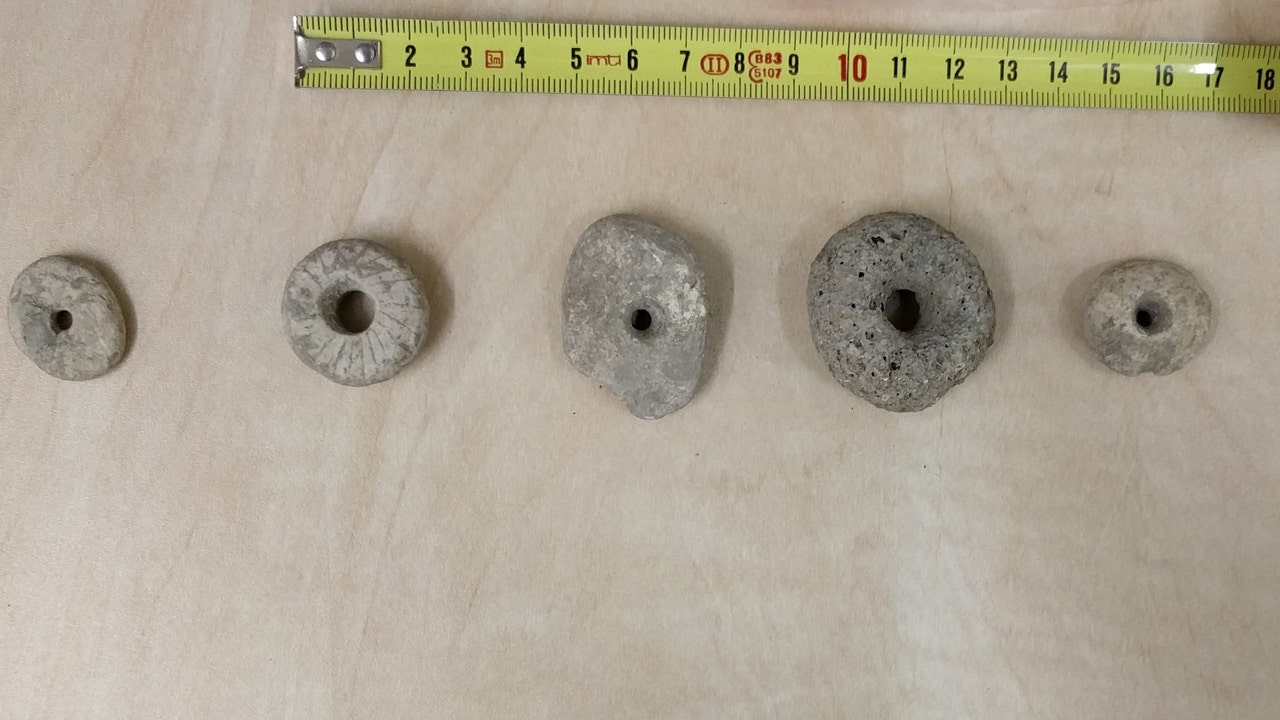Over 100 perforated stones found in Israel suggested to be ancient spindle whorls in new research

Over the course of many years of excavations in Israel, researchers have discovered a collection of wheel-shaped stones that are believed to be an early example of a “spindle and whorl” device. These stones, found at Nahal Ein-Gev II in the Jordan Valley, date back to around 12,000 years ago and may represent early evidence for the adoption of spinning with this technology.
A total of 113 perforated stones have been unearthed in the area since 1972, with 48 of them having complete perforation, 36 being broken items with partial holes, and 29 being unfinished items with one or two drill marks. The stones were predominantly made of limestone and ranged in weight from 1 to 34 grams.
Initially, researchers had various theories about the purpose of these perforated stones, including the possibility that they were related to fishing. However, after analyzing the shape, material, and size of the holes, they concluded that these were most likely spindle whorls used for spinning fibers.
To gain a better understanding of the stones, researchers used high-resolution 3D models to study them in detail. The analysis revealed standard measures such as width/length ratio, central location of the center of mass, and consistent perforation width. While use wear analysis could further strengthen their theory, it was not conducted as part of this study.
In addition to 3D modeling, researchers conducted a feasibility test with replicas to determine the functionality of the stones as spindle whorls. With the help of a traditional craft-making expert, Yonit Kristal, they were able to spin both wool and flax using the pebbles as spindle whorls.
The experiment not only demonstrated that the replicas functioned well as spindle whorls but also revealed that parameters initially thought to be disadvantageous were actually beneficial for this purpose. This discovery sheds light on the early development of rotational technologies and their role in the Neolithization processes of the Southern Levant.
While the significance of finding the “earliest” spindle whorl may diminish with future discoveries, the researchers believe that their explanation of how the innovation disappeared is crucial. By integrating new findings into their proposed scheme, a more comprehensive understanding of early technological innovations can be achieved.
In conclusion, the discovery of these perforated stones in Israel provides valuable insight into the early use of spinning technologies and their role in the development of ancient civilizations. This research highlights the importance of studying archaeological artifacts in detail to uncover the technological advancements of our ancestors.




